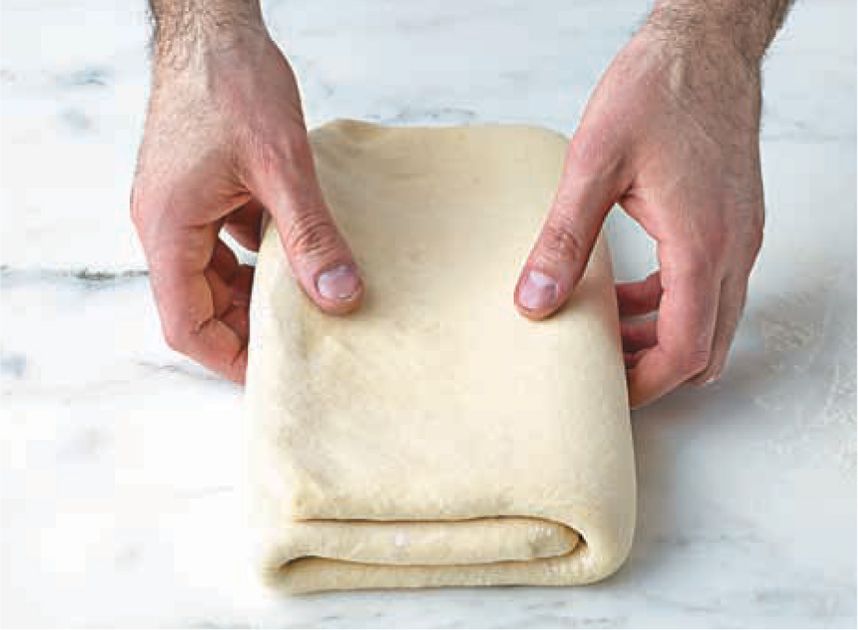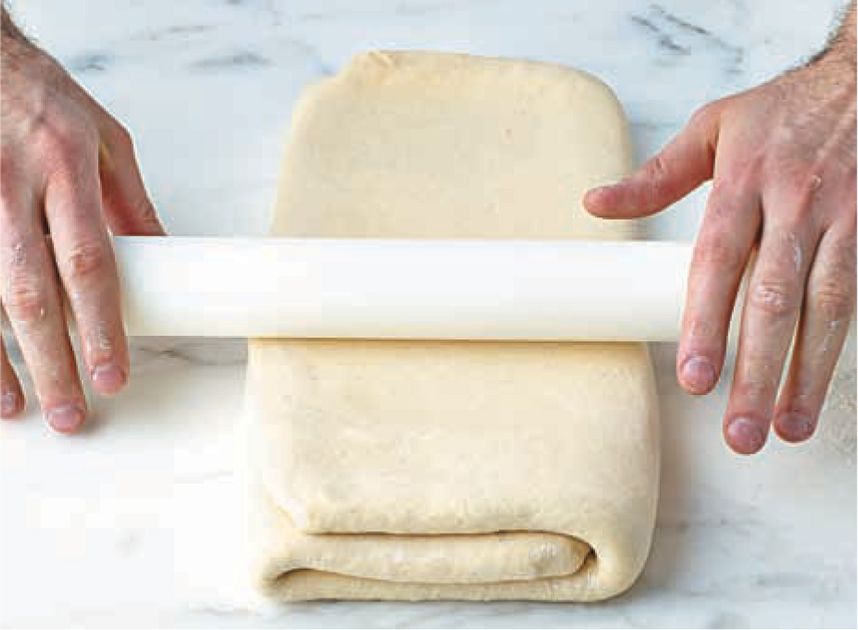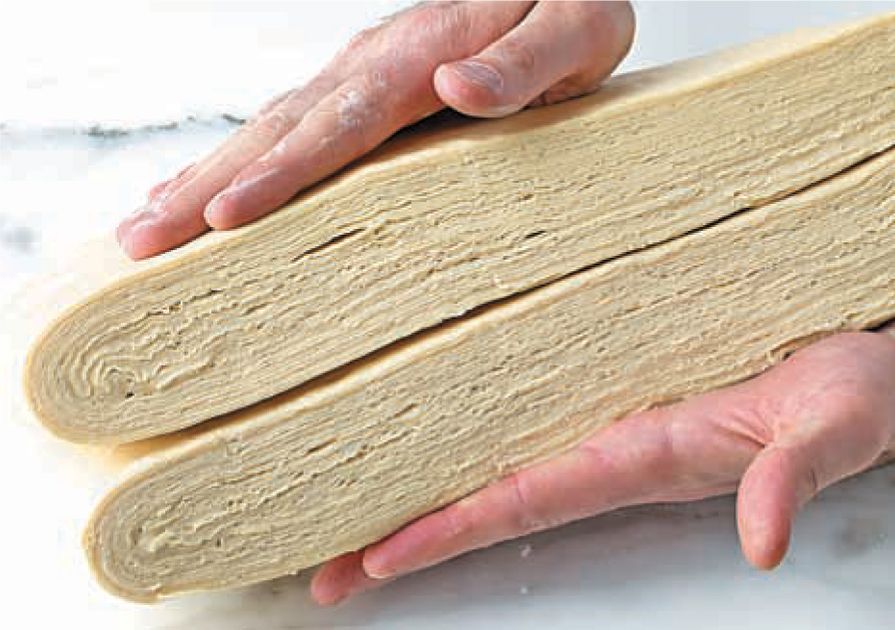Basic Steps to Lamination
Published 2014
There are always two parts: the dough and the butter block. Both need to be chilled after mixing and shaping so they are cold and firm but still flexible. It is very important that the butter and dough are similar in temperature, texture and consistency to form even layers.
Standard lamination places the butter block within the dough. Inverse lamination (often used for puff pastry because it results in a flakier texture) has the butter on the outside and the dough within. The outer layer is folded up over the inner layer to enclose it completely, then chilled.
Now begin the folds. Roll out the dough-and-butter package from top to bottom into a long rectangle. Each time you roll out the dough, the seam side should face up to make sure it doesn’t slip and slide as you work the dough with the rolling pin.
Depending on what pastry you’re making, you will either do a letter fold (which is folded in thirds, like a letter going into an envelope) or a book fold (which is folded in half, like a book).
Usually, you rest the dough in the refrigerator for at least 30 minutes between folds to ensure the butter doesn’t start to warm up and leak out.
Photos
Become a Premium Member to access this page
Unlimited, ad-free access to hundreds of the world’s best cookbooks
Over 160,000 recipes with thousands more added every month
Recommended by leading chefs and food writers
Powerful search filters to match your tastes
Create collections and add reviews or private notes to any recipe
Swipe to browse each cookbook from cover-to-cover
Manage your subscription via the My Membership page
Part of
Advertisement
Advertisement













